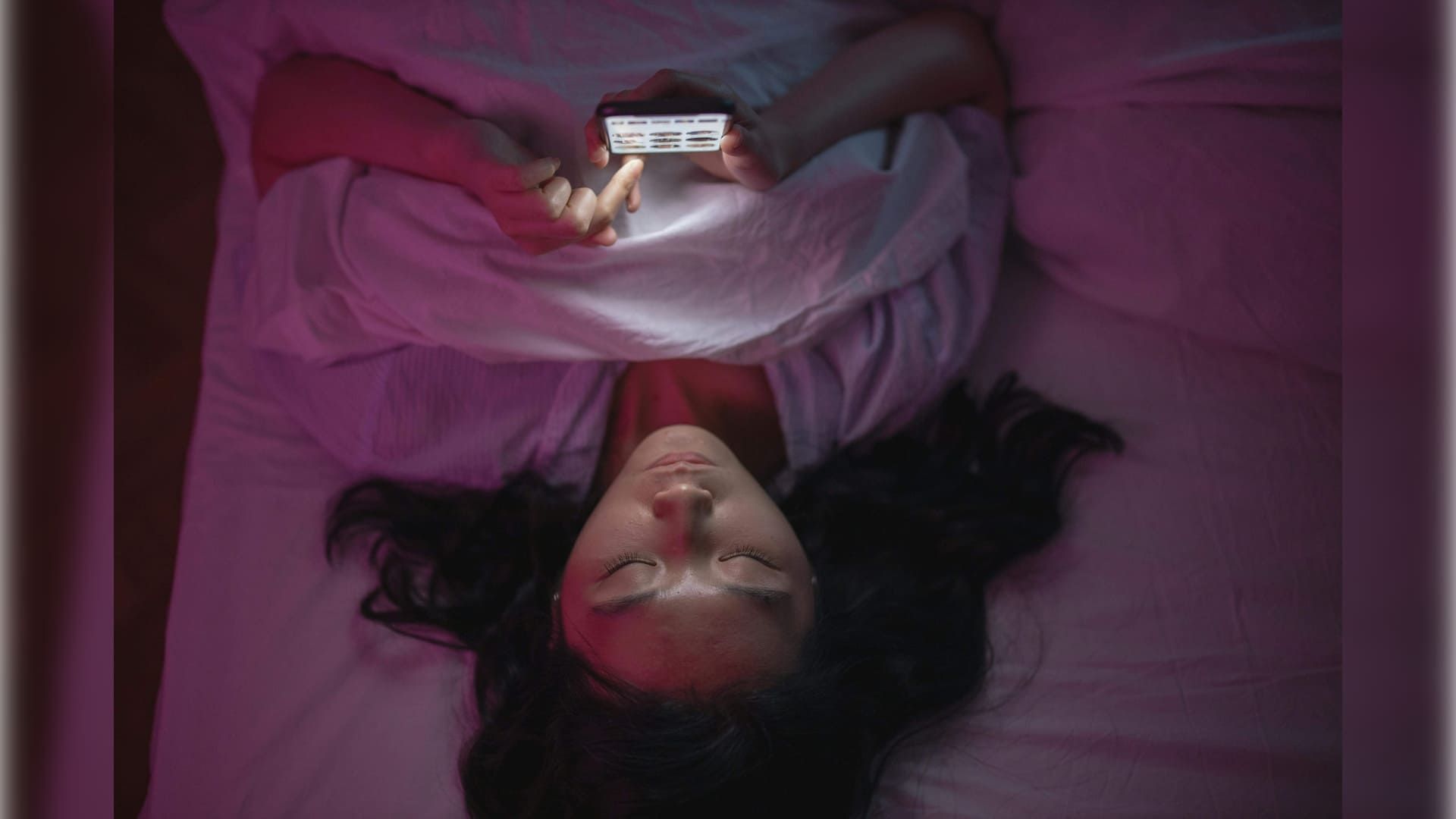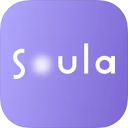How to Stop Doomscrolling and Feel More Present Again

Sarah Johnson, MD

Does this sound familiar? You lose 40 minutes before you know it, and doomscrolling leaves you tired, anxious, and mentally scattered. You didn't mean to go down that rabbit hole, but now you're here, mindlessly swiping your fingers even though your mood is getting worse. This isn't a mistake on your part. Social media and news apps are carefully designed to grab your attention with endless feeds and headlines that make you want to read them. Doomscrolling leaves you drained because it’s designed to hijack your attention; an AI Mental Health can help you develop healthier digital habits and reclaim your focus.
The good news is You can change this habit without having to go through a huge digital detox. You don't have to stop using your phone completely or feel bad about it. Small, planned changes that stop you from scrolling on autopilot and bring you back to the present moment are what make a difference. Use these research-backed tips to get your focus and peace of mind back, one scroll at a time.
better with Soula

Support for every woman:
✅ A Personalized Plan to reduce anxiety and overthinking
✅ 24/7 Emotional Support whenever you need it Cycle-Aligned Mental Health Tracking — monitor your mood and symptoms in sync with your period
✅ Real-Time Insights into your energy levels and emotional state
✅ Bite-Sized Exercises to help you return to a calm, balanced state — anytime, anywhere
Why Doomscrolling Happens
Your nervous system is set up to put potential threats first. This is how people have lived for thousands of years. Modern apps take advantage of this instinct by giving you a never-ending buffet of scary headlines and new things that make you feel good, making you think that scrolling will help you "stay prepared." The digital threat feed, on the other hand, never ends, which keeps you in a cycle of stress: Your body releases cortisol when you look at upsetting things, and then it wants to scroll more to find answers or a way to distract itself, which only makes the stress worse. This isn't just a bad habit; it's a neurological loop in which anxiety makes the urge stronger and the urge makes more anxiety.
Social media sites purposely add features that take advantage of this weakness: Infinite scroll takes away natural stopping points, algorithmically increased outrage makes you want to fight or run away, and random rewards (like "good news" in the middle of chaos) keep you hooked like a slot machine. What happened? You don't have a weak will; you're fighting a system that is meant to take away your self-control. The first step to getting out of this loop is to see it: Your scrolling isn't random; it's a conditioned response to stress. Blame isn't the answer; smarter boundaries that keep your nervous system safe are. Breaking the cycle of endless scrolling starts with finding anxiety alternatives that truly calm your mind, not just distract it.
Looking for Comfort, Finding Chaos
That "quick check" before bed often turns into 30 minutes of reading or watching stressful things, which makes it hard for your brain to relax and sleep well. In the same way, reading scary headlines first thing in the morning can ruin your mood for the rest of the day before you've even eaten breakfast. These patterns create a cycle that feeds on itself: The more you scroll, the more your nervous system stays ready for anxiety, making you want more "updates" to feel in control, but you never get any relief.
This reader's comment sums up the empty promise of doomscrolling. You might first reach for your phone to connect with someone, get distracted, or find answers, but in the end, you often feel emotionally drained, like mental clutter is piling up. You might forget what you read, but the stress it caused will stay in your body, making you feel tired instead of informed. Recognizing this pattern is important: if scrolling always makes you feel worse, it's not a break; it's a trap. Doomscrolling often leaves you more drained than informed, highlighting the need for mindful digital wellness practices to protect your mental space.
How to Break the Scroll Habit
Without Going Cold Turkey
Interrupt the Cycle to Stop Doomscrolling
Start by breaking the autopilot mechanics that keep you hooked. Learning how to stop doomscrolling begins with simple steps: Disable autoplay on videos to remove the endless "one more clip" trap. Designate at least one physical space as a screen-free zone—like keeping your phone out of the bedroom to protect sleep or banning it from the bathroom to create micro-moments of mental stillness. For an extra layer of defense, switch your phone to grayscale mode; the lack of vibrant colors reduces the visual dopamine hits that make scrolling irresistible and helps you stop doomscrolling more effectively. Creating intentional screen-free spaces encourages offline relaxation, helping you recharge without the mental clutter of digital noise.
Create a “Scroll Swap” Ritual to Stop Doomscrolling
Set scrolling limits and give yourself rewards on purpose to stop doomscrolling. Give yourself 10 minutes to check your feeds, then switch to something grounding, like stretching or making tea. Replace newsfeeds that increase anxiety with ones that share nature scenes, uplifting music, or poetry snippets. Try the "save one joy post" practice: Each day, save one truly positive or meaningful item to look at later. These mindful scrolling habits improve digital wellbeing and teach your brain to seek nourishment instead of chaos, helping you effectively stop doomscrolling.
Use Emotional Cues
Before you open an app, take a 10-second pause to ask yourself, "Am I scrolling to meet a real need or just to avoid discomfort?" This mindful moment helps you stop doomscrolling by breaking the habit loop. If you want to scroll to escape boredom or stress, text a friend instead and ask them for support. Over time, these emotional cues strengthen attention management and help you form healthier patterns, making it easier to stop doomscrolling consistently. That brief pause before scrolling allows for mindful energy redirection, helping you choose connection over consumption when stress arises.
Build New Digital Boundaries
Start Small: Claim One Sacred Hour Pick one hour each day that you will always be free of distractions. After work, unwind in your scroll-free sanctuary. During this time, turn off notifications and put your phone out of reach. These short breaks from technology are like "reset buttons" that show you can step away without missing anything important.
Celebrate the Pauses, Not Perfection. Instead of focusing on mistakes, recognize every conscious decision you make: "I felt the urge to scroll and waited 5 minutes" or "I closed the app when my timer went off." These small wins change how your brain's reward system works, so self-control feels like a good thing instead of a bad thing.
"Soft Tracking": Tune Into Emotional Payoffs. After scrolling, ask yourself, "Did this make me feel smart or tired?" Are you connected or alone? Write down one word that describes how you felt before and after scrolling, like "curious → anxious" or "bored → emptier." No judgment, just looking. As time goes on, patterns show up that make it easier to choose differently.
Boundaries aren’t walls to punish yourself—they’re bridges back to the life you want to be living.
FAQ
What is doomscrolling?
Doomscrolling is the habit of endlessly consuming negative news or social media updates, which often increases stress, anxiety, and feelings of helplessness.
Why is doomscrolling harmful?
Constant exposure to negative information can overstimulate your nervous system, raise cortisol levels, and keep you in a state of ongoing worry. It can also worsen sleep quality and lower productivity.
How to stop doomscrolling at night?
Set a digital curfew an hour before bed, replace phone time with a calming activity like reading or journaling, and keep your phone out of reach to avoid late-night scrolling.
How long does it take to break the doomscrolling habit?
It depends on how deeply the behavior is ingrained. For most people, consistent practice of new habits for 2–4 weeks is enough to notice clear improvements.
What are quick tips to stop doomscrolling?
Turn off non-essential notifications, set time limits for social media, replace scrolling with mindful breaks, and use apps that block negative news feeds.
This Isn’t About Control —
It’s About Care
Doomscrolling isn’t a personal failing—it’s your mind’s overzealous attempt to protect you in a world that feels uncertain. But true safety comes not from consuming endless updates, but from grounding yourself in the present. Each time you pause before opening an app, set a kind boundary, or choose a nourishing activity over a reflexive scroll, you weaken anxiety’s grip and strengthen your inner calm.
Progress won’t look like perfection. Some days you’ll catch yourself after 30 minutes lost; other days, you’ll redirect the impulse before it begins. Both count. This isn’t about control, but about returning—again and again—to the truth that you are more than your fears. One breath. One boundary. One small choice to prioritize peace. That’s how the shift happens. You’ve got this.














